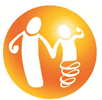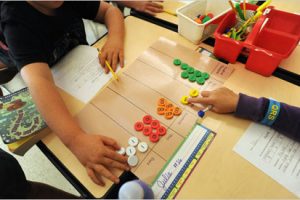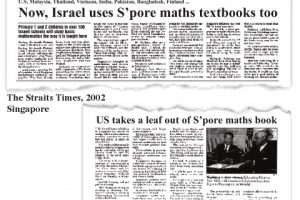(ED. Note: Math-phobia is one of the more challenging issues for our students and for this country’s educational make-up and there is much to learn from other leading countries such as Singapore. This is the final installment of Scarsdale Math teacher Bill Jackson’s “Travel Journal” to Singapore for a global math forum. Links to previous posts are below. Also see Jackson’s series with The Daily Riff, “Singapore Math Demystified! )

(ED. Note: Math-phobia is one of the more challenging issues for our students and for this country’s educational make-up and there is much to learn from other leading countries such as Singapore. This is the final installment of Scarsdale Math teacher Bill Jackson’s “Travel Journal” to Singapore for a global math forum. Links to previous posts are below. Also see Jackson’s series with The Daily Riff, “Singapore Math Demystified! )
Singapore and America: Worlds Apart?
How The U.S. Can Raise the Bar in Math Instruction
“The goal in Singapore is to make sure the average teacher is excellent.
One of the big problems in U.S. schooling,
as many a parent can testify is that a child’s education
can varies so much from grade to grade and teacher to teacher.”
Marshall Cavendish Global Mathematics Forum
September 2010
Singapore, Last Day
By Bill Jackson
Today we heard talks from representatives from several countries about the challenges and successes of implementing Singapore math around the world. We also heard talks on use of technology in Singapore and the role of teacher professional development by Dr. Banhar Yeap. Since developing effective teachers has become a hot button issue in the U.S. recently, I will focus on the professional learning opportunities afforded to Singaporean teachers and how these opportunities are building some of the best mathematics teachers in the world.
Dr. Banhar Yeap is one of the most engaging and effective teachers and professional developers I have had the privilege to know. He was formerly a professor of mathematics and math teaching at Singapore’s National Institute of Education (NIE) and he still teaches some classes there although he has recently taken a position as principal of the newly created Marshall Cavendish Institute (more about that later). Banhar has visited Scarsdale, NY on several occasions to offer teacher workshops and teach lessons to our students so I was especially happy to see him in his home turf at the math forum. I will try to summarize his talk on teacher professional development below.
The Role of Professional Development
Dr. Yeap Ban Har, Principal, Marshall Cavendish Institute, Singapore
After grade 12, all Singaporean pre-service teachers attend Singapore’s only teacher training institution, the National Institute of Education (NIE), where they receive 100-150 hours of methods courses, 35 hours of mathematical content courses, 40 hours of math pedagogy (teaching methodology), and 25 hours of general pedagogy. Pedagogy, however, is always linked to content and the same professor teaches both mathematics content and pedagogy. (By contrast, in most teacher education schools in the U.S., there is little emphasis on learning mathematical content, and pedagogy and content are often taught separately.)
Although Singaporean teachers are among the most effective in the world at promoting student achievement, 50% of graduating teachers graduate with only the equivalent of a two-year Associate’s degree, which is all that is necessary to be a teacher in Singapore. Many, however, will continue their studies after they begin their teaching careers, and obtain Bachelor’s, Master’s or even Ph.D. degrees. Teachers also are entitled to 100 hours of yearly professional development, much of it workshop-style in nature. However, Singaporean educators are increasingly aware of the limitations of workshop style professional development, so they are increasingly moving towards developing school-based collaborative professional learning communities (PLCs) where teachers work together to improve teaching and learning.
Of Singapore’s 300 schools, 51 became PLC schools last year and 51 more did so this year. By 2012, all 300 schools will be PLC schools. One of the most popular PLC models in Singapore is lesson study, a teacher learning process from Japan where groups of teachers collaborate to study, plan, teach, observe, and discuss actual classroom lessons. (For more about lesson study, read my series, “What American Teachers Can Learn from Japan”, published by The Daily Riff.)
“Teachers should be life-long learners”
One of the most important areas Singaporean teacher trainers seek to improve is teachers’ pedagogical content knowledge (PCK). This means that elementary math teachers do not necessarily need to know advanced mathematics. But they do need to learn the math they will teach (and the surrounding grade levels) from an advanced perspective. A recent study, the Teacher and Development Study (2008), showed that Singaporean teachers have very high PCK and that the PCK of the top echelon of U.S. teachers is only equivalent to that of the average Singaporean teacher. This is quite remarkable considering that the average Singaporean teacher has fewer years of post-secondary education than the average American teacher. (In her groundbreaking book, Knowing and Teaching Elementary Mathematics, Liping Ma describes the high level of PCK in Chinese elementary teachers compared to U.S. teachers. She calls this in-depth content knowledge that is needed to be an effective elementary mathematics teacher Profound Understanding of Fundamental Mathematics.)
The goal in Singapore is to make sure the average teacher is excellent. (One of the big problems in U.S. schooling, as many a parent can testify, is that a child’s education varies so much from grade to grade, and teacher to teacher.) In order to accomplish this, there are three main roles for teacher professional development in Singapore.
Teachers’ Mindset
If teachers’ mindset isn’t in the right place, whatever else we do may not be useful. We have to help our teachers understand the most effective set of beliefs about math teaching. Specifically, this means helping teachers to believe that mathematics is not only about procedures or memorization (the way many may have learned in school) but about thinking. One way Singaporean professional developers do this is by having teachers spend time solving ‘anchor problems’ – rich problems usually introduced at the beginning of a unit to promote deep thinking and generate multiple solutions and methods.
Helping Teachers to Construct Knowledge
Enhancing Learning Capacity
Teachers should be life-long learners. An important goal of professional development, therefore, is to enhance teachers’ capacity to learn. This can be done through solving and discussing unusual, and non-routine problems. When teachers see that by solving these rich problems they can improve their own problem-solving abilities, they will want to learn more.
As mentioned previously, many Singaporean educators are using professional learning communities, especially lesson study, to improve their practice. Singaporean teachers have found that lesson study is especially effective to help them improve in these three critical areas.
The Marshall Cavendish Institute
Marshall Cavendish is the largest textbook publisher in Singapore, publishers of the world-renown Primary Mathematics textbooks as well as other textbook series that are widely used in Singapore. In response to the worldwide demand for Singapore math, and understanding the challenges thereof, they recently initiated the Marshall Cavendish Institute. The work of the institute is to prepare teachers in Singapore and around the world to teach mathematics in powerful ways. Teachers can either travel to Singapore to attend, or they will send trainers to schools throughout the world.
“On several occasions I have received ‘training’ by representatives from large U.S. math textbook companies. These were usually conducted by retired educators and mostly focused on superficial aspects of math teaching”
The Marshall Cavendish Institute offers five levels of courses that teachers can take to earn different certifications. Since the first thing that teachers need to teach mathematics effectively is an understanding of mathematical content, level 100 courses are content driven (e.g. the teaching whole numbers). After this, teachers need to learn effective teaching methods so level 200 courses are pedagogy driven (e.g. problem solving). Level 300 courses are designed for content specialists such as math coaches, department heads and staff developers. These courses focus on designing effective professional development opportunities for colleagues. The advanced level 400 and 500 courses involve curriculum development and research.
The Marshall Cavendish Institute is an exciting new venture, one that in my opinion is highly unusual for a textbook company. On several occasions I have received “training” by representatives from large U.S. math textbook companies. These were usually conducted by retired educators and mostly focused on superficial aspects of math teaching (e.g. how to use the “differentiated instruction,” Internet, or “English learner” components of their programs). It’s not that I am against these things, but I think that teachers need more substantive training that helps them to learn the mathematics they will teach deeply, as well as how to convey that understanding to their students in engaging and effective ways. Ms. Duriya Aziz, the General Manager of Marshall Cavendish, impressed me greatly by her deep understanding of the important issues surrounding the teaching and learning of mathematics, as well as her compassion for helping all nations to empower their students to achieve at high levels.
Some Closing Thoughts
The end of the Marshall Cavendish Singapore Mathematics Global Forum 2010 is finally at hand. My Scarsdale colleague, Nancy Pavia, and I had a great time and I think I speak for both of us when I say that what we learned truly exceeded our expectations. I have always been a big fan of Singapore math but I also understand that good math teaching involves much more than simply using a math program from another country. We were able to see first-hand how in Singapore the entire system is designed around promoting educational excellence. It is supported and encouraged at every level, from the Ministry of Education, to the teacher training institutions, to the schools, to the parents, to the students, and even the textbook publishers. It is no wonder that Singapore ranks consistently among the top in the world in mathematics and science achievement.
But this also raises some troubling questions. How can a system that is so fragmented like the one we have in the U.S. ever accomplish what Singapore’s has accomplished? Singapore is a small country of only 5 million people, with a land area about the size of Chicago, and a very centralized system where everyone is onboard. The U.S. is large and diverse with different math standards in every state. Furthermore, different and often conflicting mandates like “Race to the Top” come from federal, state and local officials, and a large disparity between rich and poor schools results in some schools that are excellent and others that are nearly impossible to improve.
There are some encouraging signs in the U.S., however, such as the Common Core Standards initiative that promises to bring some national consistency to the mathematics children should learn. Japanese lesson study is also becoming increasingly popular in the U.S. as a way to improve teaching and learning, and excellent textbooks from high-scoring nations like Singapore, Japan, and Korea are slowly making their way into the mainstream. (The New York Times recently even had a front-page article on Singapore math.)
It’s easy to engage in teacher bashing and union blaming. But I firmly believe that if we want to improve the teaching and learning of mathematics in the U.S., all stakeholders – from the U.S. department of education, to the various state departments of education with their differing (and often poorly constructed) standards and tests, to schools, to universities, to principals, supervisors, and administrators, to teachers and their unions, to politicians and their fragmented and divisive agendas, to textbook companies whose bottom line is the almighty dollar, and others (including parents and children who definitely bear part of the responsibility) – need to come together for future of our great nation.
Or in the words of the 60’s group, The Youngbloods, “Come on people now. Smile on your brother, everybody get together, try and love one another right now.”
Till we meet again (perhaps in some future post).
Bill Jackson
Singapore
4 September, 2010
This is Bill’s final “Singapore Travel Journal” series for The Daily Riff guest posted by Bill Jackson, Math Helping Teacher, Scarsdale, NY Public Schools, one of the highest performing districts in the country, due to the remarkable interest expressed by parents and schools from his previous series about Singapore Math. We are delighted that Bill is sharing his wealth of knowledge, self-initiative and fascinating journey from Japan to Germany, discovering and pursuing Singapore Math.
Related posts from The Daily Riff:
Part 1: “Singapore Math Demystified! Can It Cure Our Country’s Math-phobia? “
“How I Became Interested in Singapore Math”
Part 2: Can Solving Problems Unravel Our Fear Of Math?
The Singapore Math Program philosophy – Problem-based, concrete-pictorial- abstract approach
Part 3: Singapore Math: Is this the Most Visual Math? The Signature Bar Modeling Method









